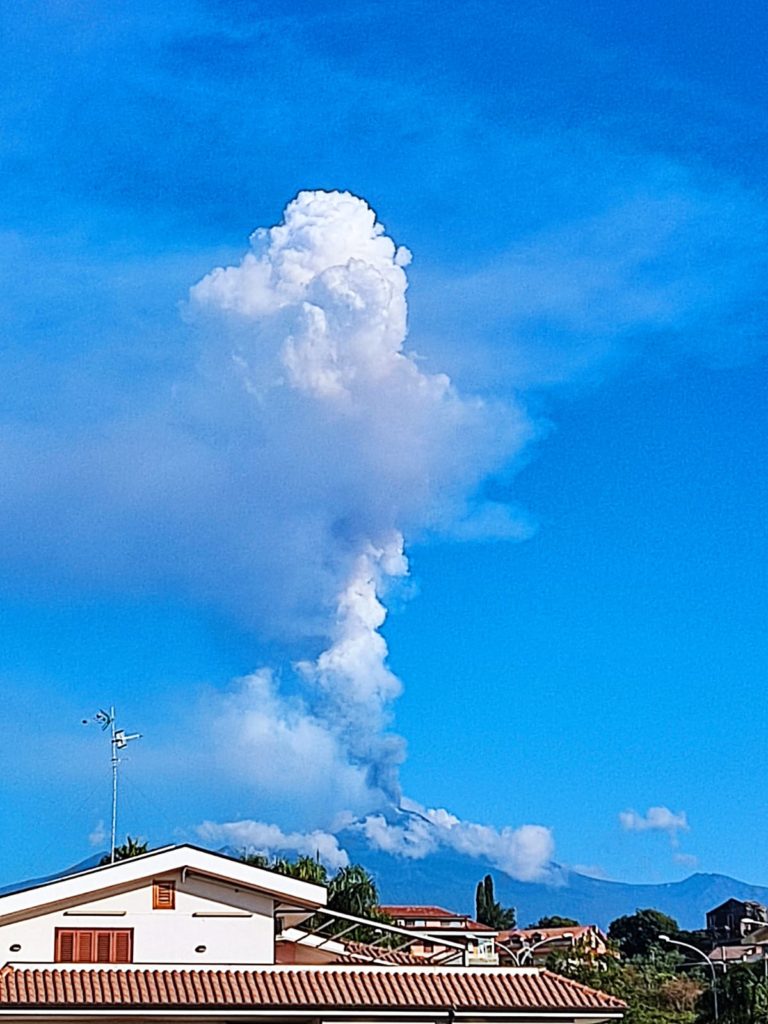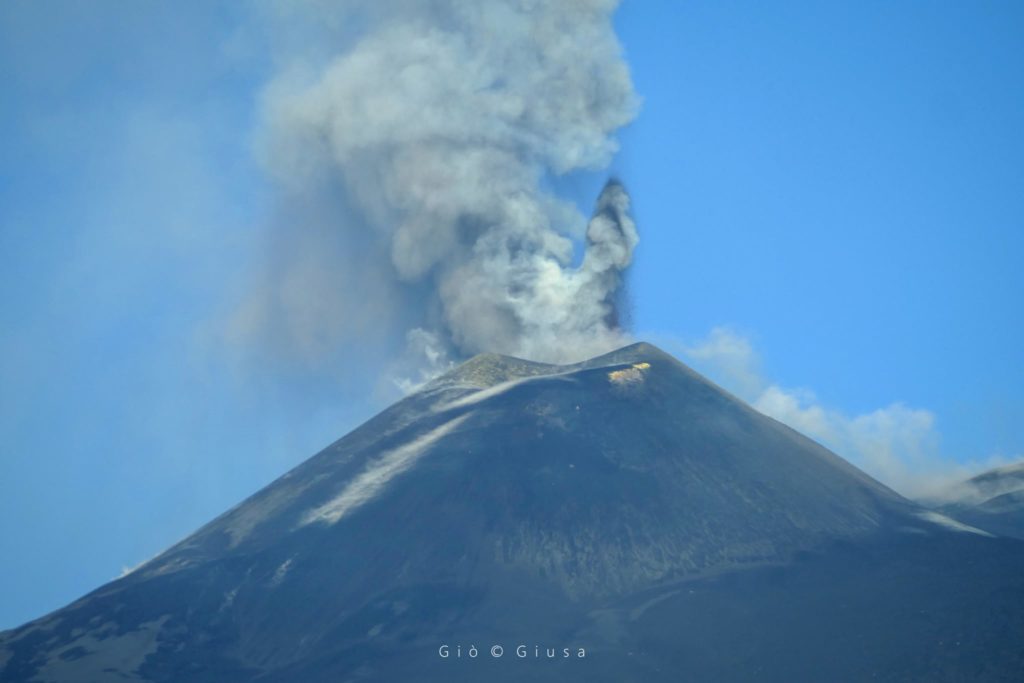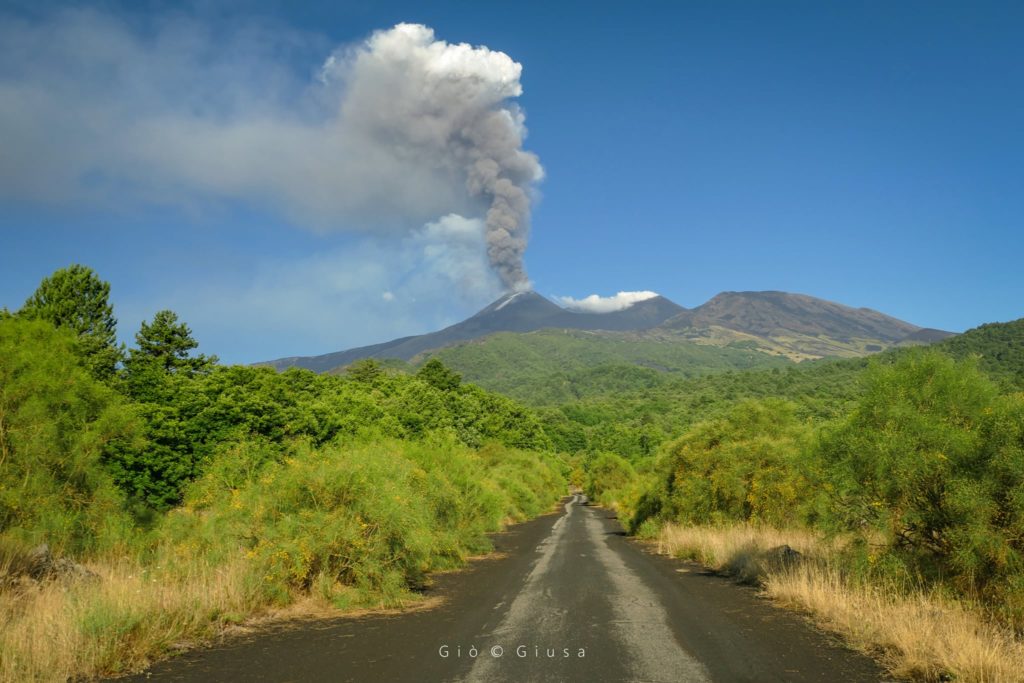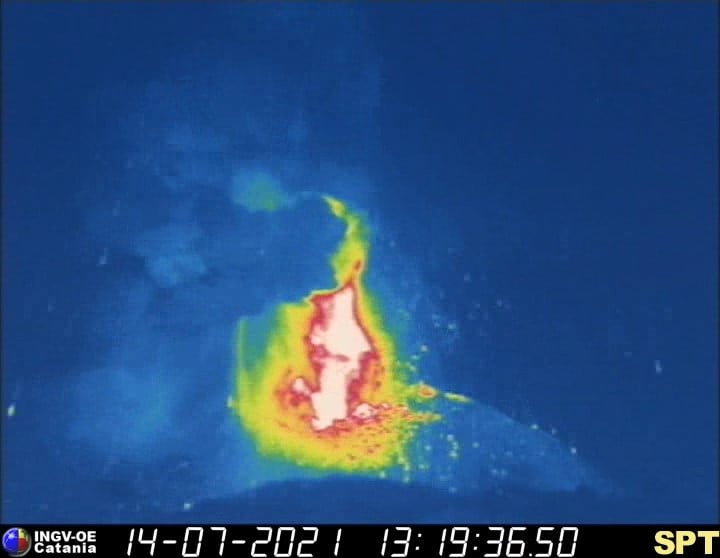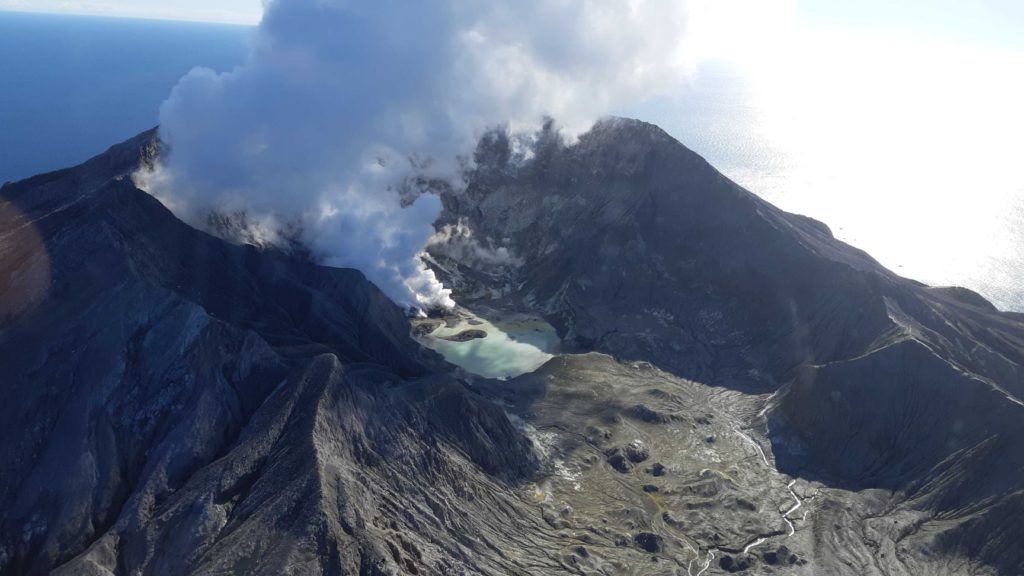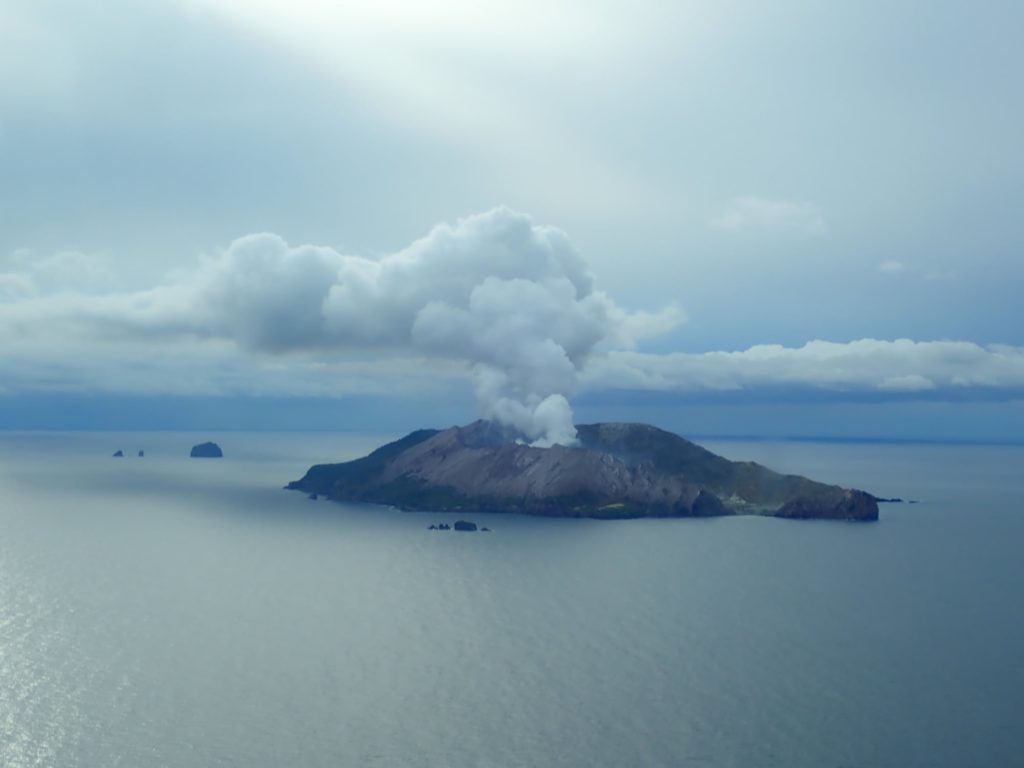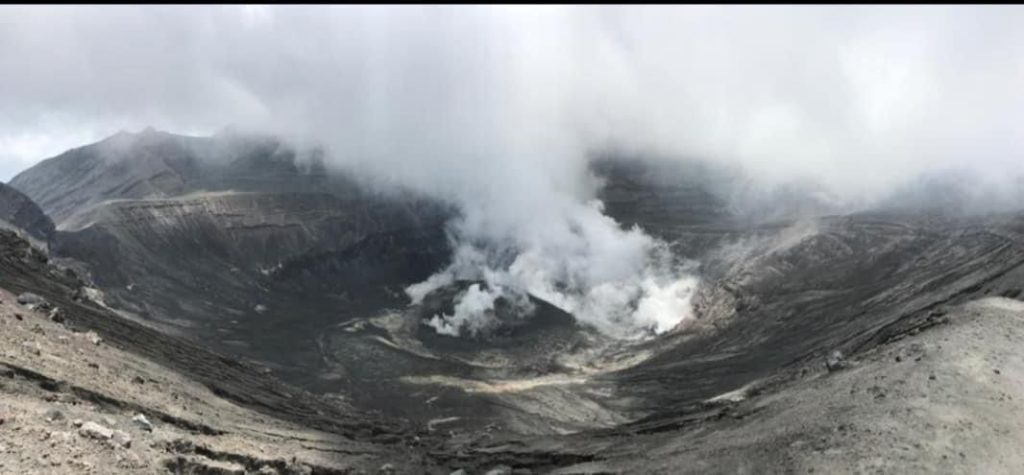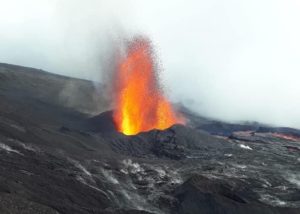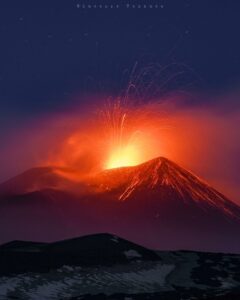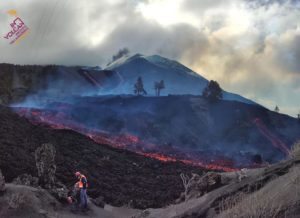July 21 , 2021.
Italy / Sicily , Etna :
Press release on ETNA activity, July 20, 2021, 10:48 (08:48 UTC).
The National Institute of Geophysics and Volcanology, Osservatorio Etneo, reports that the lava fountain of the Southeast Crater has ceased, weak Strombolian activity continues with ash emission. According to the forecast model, the eruptive cloud produced by the current activity disperses in the area between the southern and eastern slopes of the volcano.
The average amplitude of the volcanic tremor, after reaching the maximum amplitude around 07:50 UTC, from about 08:10 UTC, showed a rapid decrease in values which are currently at an average level with a downward trend. The center of gravity of the volcanic tremor sources is located in the Southeast Crater at an altitude of about 2900 m above sea level.
The infrasound activity showed a marked decrease around 08:10 UTC and is currently at a low level.
During the paroxysmal phase, signals from the inclinometric network showed an increase in background noise in response to explosive activity. Stations located in the summit area accumulated 0.4 to 1 microradians. The GNSS network has not registered any significant changes.
14:22 (12:22 UTC):
According to observations made by INGV personnel on the ground, Strombolian activity has ended and the flow which was heading towards the southwest is no longer supplied.
Further updates will be communicated shortly.
Weekly Bulletin, from July 12, 2021 to July 18, 2021 (issue date July 20, 2021)
SUMMARY STATEMENT OF ACTIVITY
In view of the monitoring data, it is highlighted:
1) VOLCANOLOGICAL OBSERVATIONS: Strombolian activity with an eruptive episode at the Southeast Crater; ordinary degassing at the Bocca Nuova Crater, the Voragine Crater and the Northeast Crater.
2) SEISMOLOGY: Very weak seismic activity of fracturing. The average amplitude of the volcanic tremor reached very high values during the lava fountain of July 14 and remained at low or medium levels for the remainder of the week.
3) INFRASOUND: high infrasound activity coinciding with the episode of the lava fountain at the Southeast Crater, low in the remaining period.
4) DEFORMATIONS: During the last week, the inclinometric network recorded significant changes in correspondence with the lava fountain event of July 14th.
Analysis of the GNSS data acquired at high frequency did not show any significant changes.
5) GEOCHEMISTRY: SO2 flux at an average level, with high values during eruptive phases
The flow of CO2 emitted by the soil decreases and is at average values.
The partial pressure of dissolved CO2 in water does not show significant variations.
There are no updates for the C / S report.
The helium isotope ratio decreases slightly but is still at medium-high values (latest data from July 08, 2021).
6) SATELLITE OBSERVATIONS: The thermal activity in the summit area was high to very high in correspondence with the lava fountains.
VOLCANOLOGICAL REMARKS
During the week, the monitoring of the volcanic activity of Etna was carried out by analyzing the images of the surveillance cameras of the INGV, Etneo Observatory (INGV-OE) and by various inspections carried out by the staff of the ‘INGV-OE, including two in the summit area on July 15-16. The week was characterized by Strombolian activity with an eruptive episode at the Southeast Crater (SEC) and ordinary degassing at the Bocca Nuova Crater (BN), the Voragine Crater (VOR) and the Northeast Crater ( NEC).
From 09:05 UTC on July 14, the resumption of Strombolian activity was observed at the level of the Southeast Crater. The intensity and frequency of the explosions gradually increased, gradually forming a lava fountain. The lava fountain finally ceased around 12:30 UTC.
Over the course of the lava fountain, an eruptive cloud occurred which, as of approximately 11:40 UTC, rose above 9,000m above sea level. The dispersion of the eruptive cloud was towards the North – East, reaching, from 12:20 UTC, also the Calabrian coast.
INGV-OE staff in the field reported abundant fallout from lapilli and ash (over 1 cm thick) in the Rocca Campana district. Fallout from volcanic ash and lapilli has been reported at Rifugio Citelli and Presa and volcanic ash at Taormina and the southern part of Calabria. The eruptive activity also produced a small lava flow from the south flank of the southeast crater cone that headed southwest. During the inspection by INGV-OE staff in the summit area on July 15, it was observed that the lava flow from the Southeast Crater was already cooling. During these inspections, the Bocca Nuova (BN) and Voragine (VOR) Craters showed degassing activity. In addition, several metric-sized bombs and their impact craters were observed, both inside and outside the Bocca Nuova (BN).
Some bombs reached the area near the seismic station at Crater del Piano, at a distance of about 1 km from the Southeast Crater and at an altitude of about 3000 m.
During both inspections, there was a strong degassing activity of the Bocca Nuova (BN).
Source : INGV
Photos : INGV, Gio Giusa .
Italy , Stromboli :
Weekly Bulletin, from July 12, 2021 to July 18, 2021 (issue date July 20, 2021)
SUMMARY STATEMENT OF ACTIVITY
In view of the monitoring data, it is highlighted:
1) VOLCANOLOGICAL OBSERVATIONS: During this period a normal explosive activity of strombolian type was observed, interrupted by an explosive sequence of medium-high energy. The total hourly frequency of explosions was between medium-low and medium values (8-13 events / h). The intensity of the explosions was mainly medium to high in the two crater zones (North and Center-South).
2) SEISMOLOGY: The seismological parameters monitored do not show significant variations. An event that was energetically stronger than usual was recorded on 07/14 at 13:19 UTC.
3) DEFORMATIONS: The island’s soil deformation monitoring networks did not show any significant changes during the period under review.
4) GEOCHEMISTRY: SO2 flux at an average level.
The average weekly C / S value is 10.6 and is at medium-high values.
The isotopic ratio of Helium dissolved in the thermal aquifer compared to the last sample of 07/05/2021 was at high values.
5) SATELLITE OBSERVATIONS: The thermal activity in the summit area is at a low level.
VOLCANOLOGICAL REMARKS
On 07/14/20 from 13:19 UTC, the crater terrace was affected by an explosive sequence of medium to high energy that affected the Center-South crater area.
At 13:19:26 UTC on 07/14/2021 an explosive sequence started from the Center-South crater area of the crater terrace. The first event which opens the explosive sequence was produced by the two mouths C; it was the main explosion that produced most of the pyroclastic material emitted. After about 15 s, a small explosion of coarse material mixed with fine material was produced from mouth S1. At 13:20:16 and 13:20:27 UTC two low intensity explosions (less than 80 m in height) emitting coarse materials follow one another at the north vent of group S2, concluding the explosive sequence. The total duration of the event is approximately 1 minute and the most obvious morphological result is the enlargement of the C crater which extends to the south. The relapse of coarse products occurred radially with a predominance towards La Sciara del Fuoco, raising a modest cloud of ash and only a few rolling blocks reached the coast line.
Source : INGV
Photos : INGV, Webcam.
New Zealand , White Island :
Increased heat flow confirms ongoing volcanic unrest at Whakaari/White Island , Published: Wed Jul 21 2021 1:40 PM
Volcanic Alert Level remains at 1
Aviation Colour Code remains at Green
An observation and thermal infrared (IR) measurement flight has confirmed high temperatures are again present. These are from locations on the 2019 lava extrusions where high temperatures have been recorded before. These observations confirm the source of glow on the web cameras. There is no evidence of eruptive activity. The Volcanic Alert Level remains at 1.
Observation flights on Thursday 15 and Tuesday 20 July have confirmed that the 2019 Primary Crater remains flooded, with minor steam/gas driven activity occurring around that area. Emissions from the small steam vent formed in early June on the north side of the 2019 crater have also declined. Other steam and gas vents remain active and unchanged. There is no evidence of eruptive activity. Thermal IR measurements on 15 July ranged from 498 to 654°C for vents on the 2019 lava extrusions (domes) and show a dramatic rise from 110-111°C measured there in late May-June. The high temperatures are like those measured in early-mid 2020.
Volcano-seismic activity including volcanic tremor has generally remained at low levels during the past months but there have been exceptions. On 2 June there was a short-lived tremor episode. Discrete acoustic signals were recorded on 18 June, and then overnight on 19-20 June some sharp increases and decreases in acoustic signal occurred with related geysering in the new vent north of 2019 Crater. A 15-minute-long low frequency volcanic earthquake was recorded on 30 June. Night glow, reflecting higher vent temperatures, has been present since the 30 June earthquake.
For several months ground elevation change derived from the InSAR satellite data has consistently showed minor uplift of an area near the 2019 Primary Crater. However, in the past few weeks a mix of signals has indicated both subsidence and continued uplift. A gas flight yesterday (20 July) has confirmed that the amount of gas being released from the volcano has not changed significantly over the past few months. The volcano continues to produce a weak-to-moderate gas and steam plume, and this may continue to cause weak acid rain downwind of the island.
Recent observations and data confirm volcanic unrest continues, albeit with some variability. As the Main Crater fills with water and the 2019 Primary Crater became flooded, there have been changes. As expected, vent temperatures initially cooled and then gas was being pushed sideways around the lava domes and changes in ground level were measured. Now, high temperature gas from magma at shallow depth is again reaching the surface through vents in the 2019 lava extrusions. The exact mechanism driving these changes is uncertain, but magma is involved either through its subsurface movement, or by new release of gases from a stationary body of magma.
Overall, the level of activity remains minor, and our recent observations and measurements are consistent with ongoing volcanic unrest. The Volcanic Alert Level for Whakaari/White Island remains at 1 and the Aviation Colour Code remains at Green.
Source : Geonet / Michel Rosenberg / Duty Volcanologist.
Photos : Geonet.
Chile , Nevados de Chillan :
Special Report on Volcanic Activity (REAV), Ñuble region, Nevados de Chillán volcanic complex, July 20, 2021, 4:54 p.m. local time (Continental Chile).
The National Service of Geology and Mines of Chile (Sernageomin) publishes the following PRELIMINARY information, obtained thanks to the monitoring equipment of the National Volcanic Monitoring Network (RNVV), processed and analyzed at the Volcanological Observatory of the Southern Andes ( Ovdas):
On Tuesday July 20, at 4:38 p.m. local time (8:38 p.m. UTC), monitoring stations installed near the Nevados de Chillán volcanic complex recorded an earthquake associated with fluid dynamics (long period type) in the volcanic system.
The characteristics of the earthquake after its analysis are as follows:
TIME OF ORIGIN: 4:38 p.m. local time (8:38 p.m. UTC)
LATITUDE: 36.865 ° S
LONGITUDE: 71.372 ° W
DEPTH: 1.9 km
REDUCED DISPLACEMENT: 562 (cm2)
ACOUSTIC SIGNAL: 11.4 Pascals (Pa) reduced to one km
The characteristics of the surface activity are as follows:
MAXIMUM HEIGHT OF THE COLUMN: 560 meters above the point of emission
DIRECTION OF DISPERSAL: East (E)
OBSERVATIONS:
The volcanic technical alert remains at the Yellow level.
Source : Sernageomin.
Photo : Chillan Viejo Chile
Saint Vincent , Soufrière Saint Vincent :
La Soufriere Volcano – SCIENTIFIC UPDATE 20/07/21 1:00PM
-Seismic activity at La Soufrière, St Vincent has remained low since the tremor associated with the explosion and ash venting on 22 April. In the last 24 hours, only a few small earthquakes have been recorded.
– Persistent steam emissions from a few regions inside the crater continue to be the dominant observable feature.
– Thermal anomalies continue to be detected but do not indicate an explosive event is imminent but that there is a source of heat, most likely from a small body of magma left over, close to the floor of the summit crater.
– . Measurements of the sulphur dioxide (SO2) flux at La Soufrière were carried out by boat off the west coast on 15 July, with the assistance of the coast guard. Several traverses were completed and yielded an average SO2 flux of 280 tons per day.
– Work is still ongoing to restore capacity lost during the explosive phase of the eruption.
– Current activity is consistent with a period of unrest after an eruption. This can continue for weeks to months. While volcanic activity has been on a decline, there is the continued presence of near surface hot spots, daily seismic activity and substantial degassing.
– There is a small, but not insignificant, possibility that magmatic activity might restart, should there be an influx of new magma from depth.
-The volcano is at alert level ORANGE.
Source et photo : UWI


